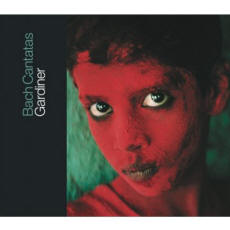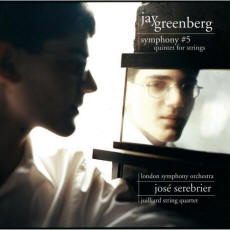|
You are reading the older HTML site
Positive Feedback
ISSUE
27
Notes of an Amateur September, 2006 - Part 1
Bach Cantatas. Volume 26: Cantatas for Whit Sunday and Whit Monday. John Eliot Gardiner. Soli Deo Gloria. SDG 121 Pentecost (Whit Sunday in the English church), the celebration of the descent of the Holy Spirit into the souls of Christ's disciples (50 days after the Resurrection), offers a splendid opportunity for a composer—and for a conductor, chorus, and orchestra—who understand the universality of the state of mind Pentecost draws upon. From the Eastern Church, which plays down the human will in making oneself open to such a longed for and blessed 'intrusion,' to the Pentecostal Christians in the US who pursue it actively, to ordinary, barely believing others who sometimes find themselves inexplicably visited by uninvited grace, though individual faiths approach it differently, all understand the essence of this experience. It is the religious version of the 'intimations of mortality' the most ardent of the romantic poets wrote about. It is for many the foundation of their belief that there is more to existence than we know. So John Eliot Gardiner arrives at the four cantatas Bach wrote for Pentecost and the four more he wrote for the following Monday—all performed (and thus recorded) by the same group of musicians and singers in the same venue, which is seldom the case in this series. And once again he proves intuitively 'right' for this composer, perhaps most right for these particular cantatas. For Bach (and Gardiner), Pentecost may be a mystery but it is not one shrouded in half-light. It is rather one to be celebrated openly and joyfully as the realization of something long believed in, if sometimes in desperation. The language and music suggest the approach of lovers long held apart; and ultimately the joyful satisfaction of their union. What is most appealing about the Whitsunday cantatas to my ears is the unabashed and unsugared sweetness of the slower passages. This is clearly music written by a man who knows that religious and earthly love come from the same source in us and overlap in ways that most of us have forgotten. The Whit Monday cantatas, which make up the second CD in this set, as we might expect, are about contentment and gratitude. They are even a bit full of themselves about what has been achieved. They are most satisfyingly heard as the fulfillment of the Whitsunday cantatas. So once again, all I can really report is not newsworthy. This superb set of Bach cantatas continues to be superb. If you treasure this music, get on board.
Kaija Saariaho, Complete Cello Works, Alexi Deschaieves, cello. Aeon Records. AECD 0637. I find contemporary Finish composer Kaija Saariaho the most difficult of her generation worth listening to. My wife, who is half-Finish, flees from the house when I put her music on. But something in me persists. Saariaho writes on the edge, where music is retrieved from the chaos of raw sound. It is as if she aims to confront human existence with music that refuses to make use of tropes drawn from the tradition of music; with music which, to borrow a term seldom heard these days, is existential. She seeks to capture and represent the experience of meeting the world for the first time: before we had language or musical forms. For most artists, and many have tried this road, this is a hopeless task. It is very nearly the equivalent of writing without language. Because we 'know' the world almost entirely through traditional forms (verbal language, melody, harmony, recognizable visual shapes and objects), because we find experience that is not shaped and interpreted by these forms alien, unrecognizable, and therefore threatening, that is how Saariaho's music strikes us on first hearing. Fierce and violent. And we ask ourselves—I ask myself once again as I listen to this recording of her music (mainly) for solo cello—could we ever come to hear this music, this seemingly raw and barbaric sound, as anything but assault? Assault on our humanness? On what we have made of the world? Is this the music of a post-civilized world peopled by ferocious beasts, soulless androids, and machines that we see in some sci-fi movies? Or is it how our own world might strikes us if we could see it, in and of itself, if it came to us unmediated by our preconceptions, traditions, templates, and expectations? Is it what starting over would sound like? I write this as the music plays for me, now for the third time, as I wait for it to break through all that I have learned to hear music with. (And I listen to a good deal of very challenging modern music, so I don't consider myself an innocent.) For after all, if created work is to become art, it must be able to achieve this. It must be sufficiently powerful and eloquent to make its case to us, the willing. By the time we are at "Mirrors" and "Sept Papillons," the fourth and fifth works on the recording, the violence has subsided and we have arrived at a kind of feral impressionism. It no longer assaults us, but it continues to elude us, to swim beyond our ken. The sonic landscape is one we do not recognize, one in which we cannot find bearings. There is a quote form St. John Perse used as a headnote for this disc, suggesting by its presence that the composer feels this music aspires to a mystical state of mind before the world: that its raw, inhuman character is the achievement of the erasure of the intrusion of our humanness into a spiritual contemplation of the world. I have read enough mystic theology to draw this inference. All I can say about this is that an attempt to represent such an experience would be little different to us than a representation that had no spiritual content or aspiration: both are equally beyond our knowing. And that, of course, is the problem. If art aspires to reach beyond or beneath shared human experience, unless it manages to reach and persuade us in some way that it has done this, speaking to us in the only language(s) we know, how are we to determine what's been accomplished? We can nod knowingly and reverently or we can turn up our palms in despair.
Jay Greenberg, Symphony No. 5; String Quintet. José Serebrier, London Symphony Orchestra. Julliard String Quartet. Sony. Can music history go backwards? Or is it immediately 'retro' and precious to our ears and so, sentimental, like a day dream? This is the first, if ultimately not the most important, question that comes to mind on hearing the Symphony No. 5 (!) of fourteen-year-old (!) composer prodigy Jay Greenberg, about whom you will doubtless be hearing a great deal during the rest of 2006, and perhaps beyond. To my ears, his symphony (and quintet) don't sound retro at all. Yes, the symphony brings to mind early twentieth century British symphonic music—Walton and to some extent Bax. But more because the composer clearly still finds that musical language viable than because he wants to revisit the musical past. He is young enough, unlike Thomas Adès, for example, to have escaped the immediate influence of high modernism. The musical language we adults grew up with is not really a force here. Greenberg is, at least in the two pieces recorded here, proposing a post modern and a post post-modern musical world. And he has the tools and may have the imagination to make a case before he's through. If we have sufficient genius, we can choose our precursors. Greenberg is a bold and fascinating orchestrator. This is music that has a confident sweep to it. From the onset of the first movement, it declares itself with orchestral colors flying. Does it border on pure rhetoric? Before we can answer that one, it pulls back and becomes rhapsodic, finally dying into silence. The music is not notably melodic, nor is it another incarnation of romanticism. The second movement bounces along in 2/4 time, the low brass leading the way. This is the scherzo and it sounds like one. It is at times almost a march, like one of Britten's. A nervous march, which sweeps us along. Where can we go from here? To a long slow third movement, in which his symphony becomes what music by young composers seldom is: interesting. What is going on here? Harp, flute, horns, a gong, low strings, mid-high strings. Goldberg calls this movement, instructively, a fantasia. Its mood is unsteady, restless—peaceful passages intersected by short, bold dynamic interludes. About eight minutes into its eleven minute duration, the bolder mood dominates for a minute or so, and then we are back to the movement's chief state of mind, which is elegiac and meditative. The final movement is back to the bold ('con brio') mood of the first two. Sweeping strings, which recall (every so slightly) the Richard Rogers (!) of Victory at Sea, are quickly replaced by lower strings and brass. It is all very virtuosic. But it brings me to the sense that's been building all along that the whole symphony is either an example of, or a compelling statement about, evasion, or to be more complimentary, irresolution. So it can't or won't ignore the modern altogether. The whole piece, for all its textural richness and interest, which is very real, keeps not being a coherent musical statement. It is periodically interesting and suggestive; but it continually moves away form every oasis it lands on, dancing out ahead of our expectations. And then suddenly, it's over. Where did it go? And then we have the String Quintet, with two cellos. It is a piece I was initially much taken with. The first movement is rhapsodic and melancholy, featuring the viola as a solo and leading voice and favoring the cellos over the violins. An auspicious beginning. The middle movement (a scherzando) is more animated, allowing the violins more presence. But the overall balance remains a bit sardonic in tonal color. The final movement is also up-tempo but more complex in mood. Hurly-burly, then rhythmically pulsing and (early) Bartokian in a short, furious dance; then almost swoonlike. It jumps from mood to mood, suggesting the evasive quality of the symphony. It is searching (?) for a place to land. It does finally find one, but the landing has no memory of the starting point. I am reluctant to come out anywhere in particular about the music of this very young man. I am more interested to hear what others make of it. I find it interesting, intriguing, diverting, occasionally impressive, but finally not satisfying. I hear precocious mastery of the tools music is made from, which sometimes is nearly enough. I am not at all bored by this music. If the life can grow into the technical talent, this recording debut will more than likely prove to have been a significant beginning to a notable career. Something even approaching what the musical press is promising us. I wish him well. System used for these auditions: Audio Note transport and dac, Audio Note OTO integrated amplifier, Audio Note J/SPe speakers. Cabling by Audio Note. Bob Neill, in addition to being an occasional equipment and regular music reviewer for Positive- Feedback Online, is also proprietor of Amherst Audio in Amherst, Massachusetts, which sells equipment from Audio Note, Blue Circle, Manley Labs, and JM Reynaud, among others.
|



